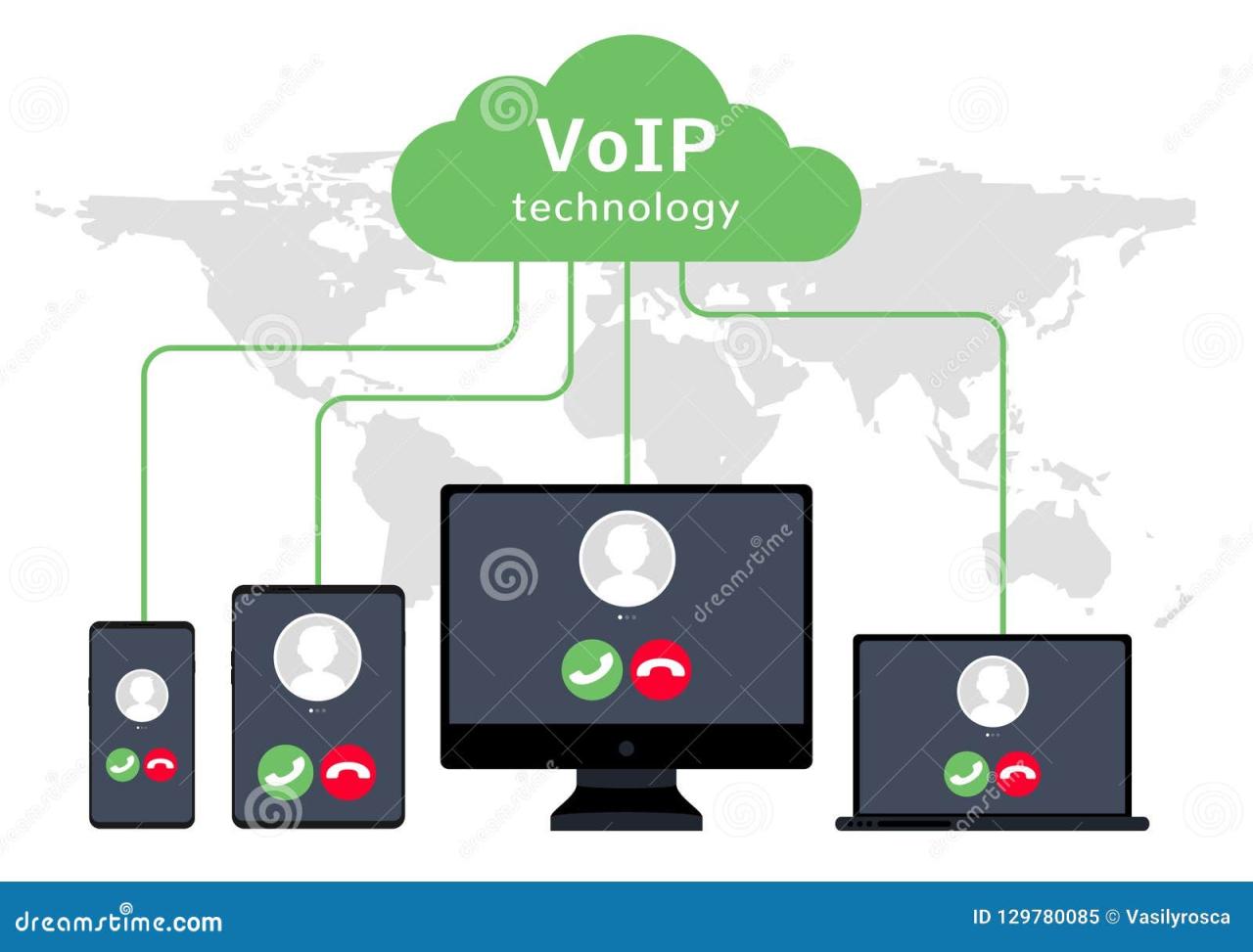Voice IP is revolutionizing how we communicate in the digital age, bringing unparalleled innovation and efficiency to voice communications. This technology enables users to send voice data over the internet, resulting in a shift away from traditional telephony methods. By understanding the fundamental components of Voice IP systems, we can appreciate their significance in contemporary communication landscapes.
The differences between traditional telephony and Voice IP are striking, particularly in terms of cost, flexibility, and scalability. As businesses and individuals alike adopt this technology, they encounter numerous advantages and challenges that shape their communication strategies.
Overview of Voice over IP Technology

Voice over IP (VoIP) technology has transformed the way we communicate, facilitating voice and multimedia communication over the internet. It represents a significant shift from traditional telephony systems to a more versatile and cost-effective approach. VoIP enables users to make calls using broadband internet connections rather than conventional telephone lines, allowing for a myriad of functionalities that extend beyond voice calls alone.Voice over IP technology operates by converting voice into digital packets that are transmitted over the internet.
This differs fundamentally from traditional telephony, which relies on circuit-switched networks. In traditional systems, a dedicated circuit is established for the duration of the call, limiting the efficiency and flexibility of communication. In contrast, VoIP utilizes packet-switching technology, where voice data is divided into packets and sent over shared networks. This allows for greater scalability, lower costs, and the ability to integrate various communication forms, such as video calls and messaging, into a single platform.
Utilizing a system voip can dramatically improve communication efficiency within your organization. By adopting a voip prepaid plan, companies can benefit from predictable budgeting while ensuring high-quality calls. Together, these solutions empower businesses to stay connected in a cost-effective manner, fostering better collaboration and productivity across teams.
Components of Voice over IP Infrastructure
The effective operation of Voice over IP systems relies on several essential components that work synergistically to provide seamless communication experiences. Understanding these components is crucial for appreciating the technology’s capabilities and infrastructure.The primary elements that constitute a VoIP infrastructure include the following:
- VoIP Phones: These can be hardware phones specifically designed for VoIP or software applications (softphones) that run on computers and smartphones. They convert analog voice signals into digital data and vice versa.
- VoIP Gateways: These devices connect traditional telephony networks (such as PSTN) with VoIP networks. They facilitate the conversion between the formats used by both systems.
- Session Initiation Protocol (SIP): SIP is a signaling protocol used to initiate, maintain, and terminate communication sessions. It is crucial for establishing calls and managing multimedia communication.
- Codecs: Codecs are software or hardware that encode and decode voice signals. They compress voice data to minimize bandwidth usage while maintaining call quality.
- VoIP Servers: These servers manage call routing, registration, and session management. They enable multiple users to connect and communicate effectively.
Understanding these components highlights the complexity and sophistication of Voice over IP technology. Each plays a vital role in ensuring that communication is efficient, reliable, and of high quality, marking a significant advancement over traditional telephony systems.
For businesses looking to optimize their communication, voip prepaid solutions offer flexibility and cost-effectiveness. This approach allows users to manage their call expenses efficiently. Furthermore, integrating a system voip can enhance the overall communication infrastructure, enabling seamless connectivity and advanced features that cater to the specific needs of any organization.
Voice over IP technology enables communication that is not only cost-effective but also integrates various media forms, enhancing connectivity and collaboration.
Benefits of Using Voice over IP

The adoption of Voice over IP (VoIP) technology offers a multitude of advantages for both businesses and individuals. By leveraging the internet for voice communication, users can experience enhanced features, improved connectivity, and significant cost reductions. The following sections delve into the primary benefits associated with VoIP, highlighting its importance in modern communication.
Cost Savings Associated with Voice over IP Implementation
One of the most compelling reasons businesses and individuals choose VoIP technology is the substantial cost savings it provides compared to traditional telephony services. The following points illustrate the financial advantages of adopting VoIP:
- Reduced Calling Costs: VoIP significantly lowers the cost of both local and long-distance calls, making it a cost-effective solution for businesses that engage in frequent communication with clients or partners across various regions. Many VoIP providers offer unlimited calling plans at a fraction of traditional phone service costs.
- No Additional Hardware: With VoIP, users can utilize existing devices such as computers, smartphones, and tablets, eliminating the need for additional hardware investments. This factor reduces overhead costs, especially for startups and small businesses.
- Lower Maintenance Fees: VoIP systems typically require less maintenance than traditional phone systems, leading to lower ongoing operational costs. Providers often handle system updates and technical support as part of their service package, further reducing expenses.
Flexibility and Scalability of Voice over IP
Flexibility and scalability are paramount in today’s fast-paced business environment, and VoIP technology excels in both areas. Organizations benefit from an adaptable communication system that can grow alongside their needs. The unique characteristics of VoIP that enhance flexibility and scalability include:
- Remote Accessibility: VoIP allows users to make and receive calls from anywhere with an internet connection. This feature is particularly beneficial for remote workers or businesses with multiple locations, facilitating seamless communication across geographical boundaries.
- Quick Setup and Configuration: VoIP systems can be set up rapidly, allowing businesses to scale their communication infrastructure without the delays associated with traditional phone systems. New lines can be added easily, accommodating growth without extensive installation processes.
- Feature-Rich Services: VoIP providers offer an array of advanced features such as voicemail-to-email, call forwarding, video conferencing, and more, allowing businesses to customize their communication strategies. These features enhance collaboration and improve overall operational efficiency.
“Adopting Voice over IP technology not only streamlines communication processes but also positions businesses for future growth with its inherent flexibility and cost-effectiveness.”
Challenges and Considerations of Voice over IP
Voice over IP (VoIP) technology has revolutionized communication by enabling voice calls over the internet. However, while it offers numerous advantages, there are inherent challenges and considerations that users must navigate to ensure optimal performance and security.
Network Dependency and Latency Issues
One of the primary challenges faced by VoIP users is its heavy reliance on a stable and robust internet connection. The quality of VoIP calls is directly influenced by the network’s performance, leading to issues such as latency, jitter, and packet loss. Latency refers to the time delay experienced during communication, which can result in awkward pauses and interruptions in conversation.
Jitter, on the other hand, refers to the variation in time delay between packets arriving, which can lead to garbled audio. Packet loss occurs when data packets fail to reach their destination, resulting in dropped calls or choppy audio.To mitigate these issues, users should consider the following strategies:
- Investing in high-quality internet connections: Opt for broadband connections with sufficient bandwidth to support multiple concurrent VoIP calls.
- Implementing Quality of Service (QoS) settings: Enable QoS on routers to prioritize VoIP traffic over other data transmissions, ensuring clear audio quality.
- Utilizing wired connections: Whenever possible, use Ethernet connections instead of Wi-Fi to reduce latency and improve stability.
Security Risks Associated with VoIP Communications
VoIP communications are susceptible to various security threats, including eavesdropping, denial-of-service (DoS) attacks, and identity theft. These risks arise due to the nature of data transmission over the internet, making it crucial for users to implement robust security measures.To enhance security and protect VoIP communications, the following solutions are recommended:
- Employing encryption protocols: Utilize protocols such as Secure Real-time Transport Protocol (SRTP) to encrypt voice data, preventing unauthorized access.
- Implementing firewalls: Use firewalls specifically designed for VoIP applications to monitor and control incoming and outgoing traffic.
- Regularly updating software: Keep VoIP software and hardware updated to patch vulnerabilities and enhance security features.
Importance of Reliable Internet Connections
A reliable internet connection is paramount for achieving optimal VoIP performance. The performance quality of VoIP services hinges on bandwidth availability and consistency. Insufficient bandwidth can lead to dropped calls, delays, and poor audio clarity.For effective VoIP usage, consider the following factors regarding internet reliability:
- Assessing bandwidth requirements: Determine the bandwidth necessary to support the number of simultaneous calls and additional internet activities.
- Conducting regular speed tests: Monitor internet speed to ensure it meets the demands of VoIP services.
- Using backup internet connections: Having a secondary connection can help maintain communication in case the primary service fails.
Future Trends in Voice over IP: Voice Ip

As technology continues to evolve, Voice over IP (VoIP) is also undergoing significant developments that promise to enhance its functionality and user experience. This segment explores emerging trends and technologies in VoIP, illustrating the advancements that can be anticipated as well as the implications of next-generation networks such as 5G on VoIP applications.
Emerging Trends in Voice over IP Technology
The VoIP landscape is changing rapidly, driven by innovations that improve connectivity, security, and user experience. Several key trends are emerging:
- Integration with Artificial Intelligence: AI technologies are being employed to enhance functionalities such as voice recognition, sentiment analysis, and automated customer support. This results in more intuitive and responsive communication systems.
- Increased Use of Cloud-Based Solutions: Cloud communications are simplifying the deployment and management of VoIP systems, allowing businesses to scale their operations seamlessly without significant infrastructure investment.
- Collaboration Tools Integration: VoIP is increasingly integrated with collaboration platforms, enabling enhanced functionalities such as video conferencing and file sharing, thereby facilitating more cohesive teamwork.
- Enhanced Security Protocols: With rising concerns over security, advanced encryption methods and protocols are being implemented to protect sensitive voice data from potential threats.
Comparison of Current VoIP Services and Future Advancements, Voice ip
Current VoIP services offer basic functionalities such as voice calling, voicemail, and call forwarding. However, several anticipated advancements indicate a more sophisticated future:
- Quality of Service (QoS) Improvements: Future VoIP solutions will likely leverage enhanced QoS mechanisms to ensure clarity and reliability during calls, even under varying bandwidth conditions.
- Support for High-Definition Audio and Video: As bandwidth increases, future VoIP services are expected to support high-definition audio and video, enhancing communication quality.
- Enhanced Mobility Features: With developments in mobile technology, users can expect more seamless experiences when switching between devices or locations without call interruptions.
- Integration with 5G Technology: The rollout of 5G networks will create opportunities for VoIP services to deliver ultra-low latency and improved connection stability, leading to a richer user experience.
Impact of 5G Technology on Voice over IP Applications
The advent of 5G technology is set to revolutionize VoIP applications through faster speeds and reduced latency. Some potential impacts include:
- Enhanced Connectivity: 5G will provide significantly faster Internet speeds, enabling VoIP calls to be made with minimal lag, which is critical for business communications and online meetings.
- Improved Reliability: The improved network architecture of 5G is designed to handle more simultaneous connections, reducing the chances of dropped calls and enhancing overall service quality.
- Advanced Applications: The speed and bandwidth of 5G will facilitate more complex applications, such as augmented reality (AR) and virtual reality (VR) communications, which rely heavily on real-time data transfer.
- Broader Access: Rural and underserved areas will benefit from 5G deployment, allowing a larger population to access high-quality VoIP services that were previously unavailable.